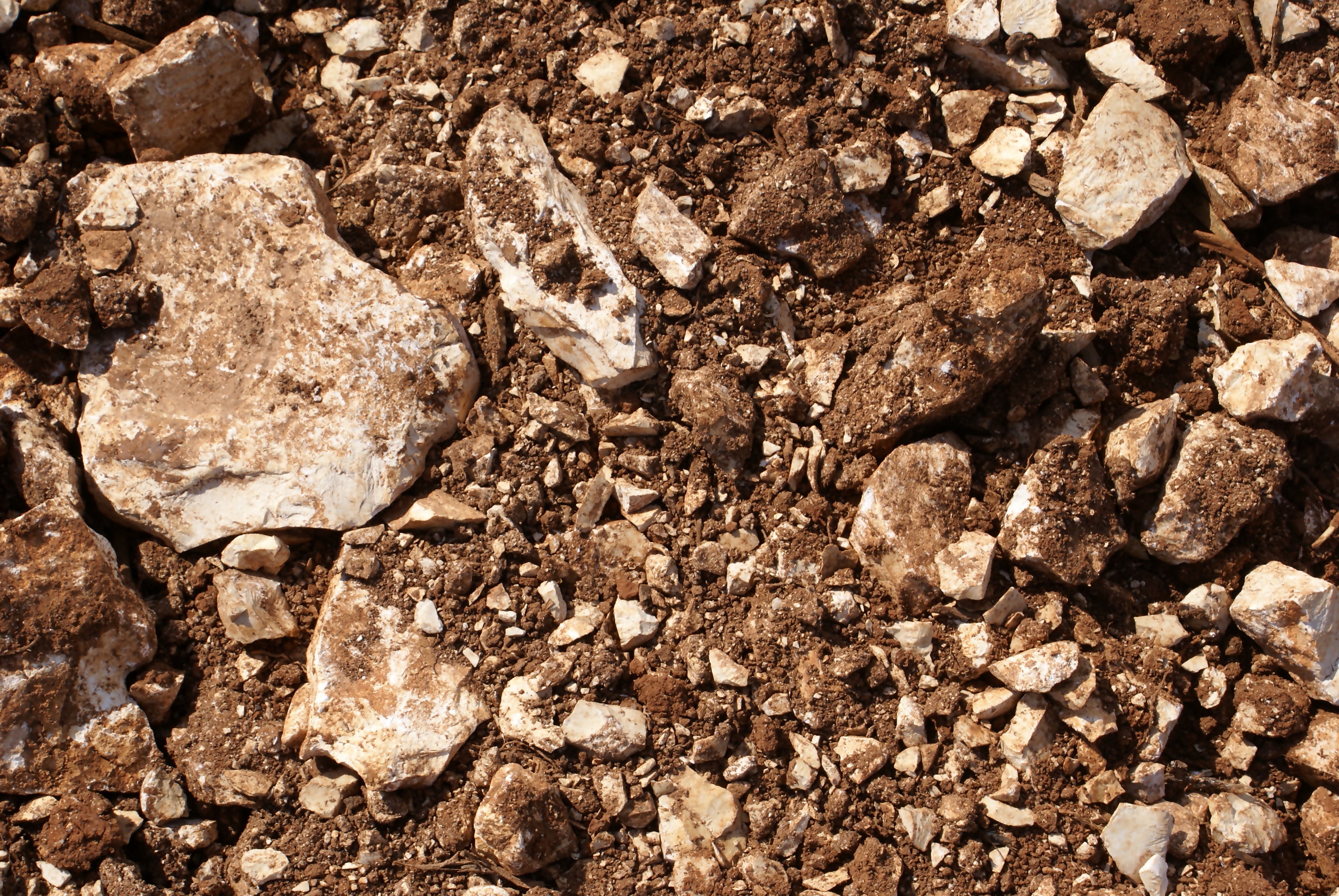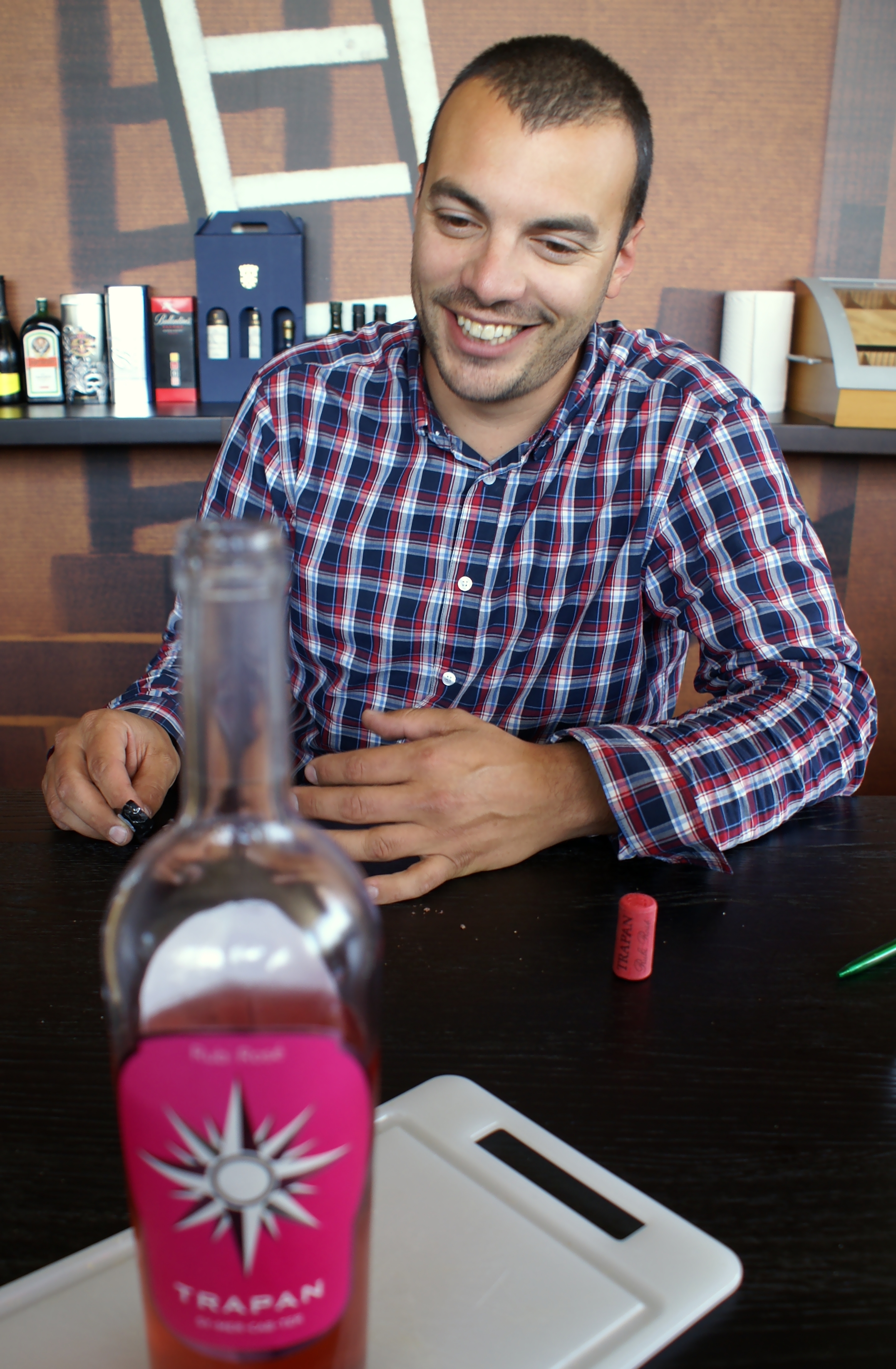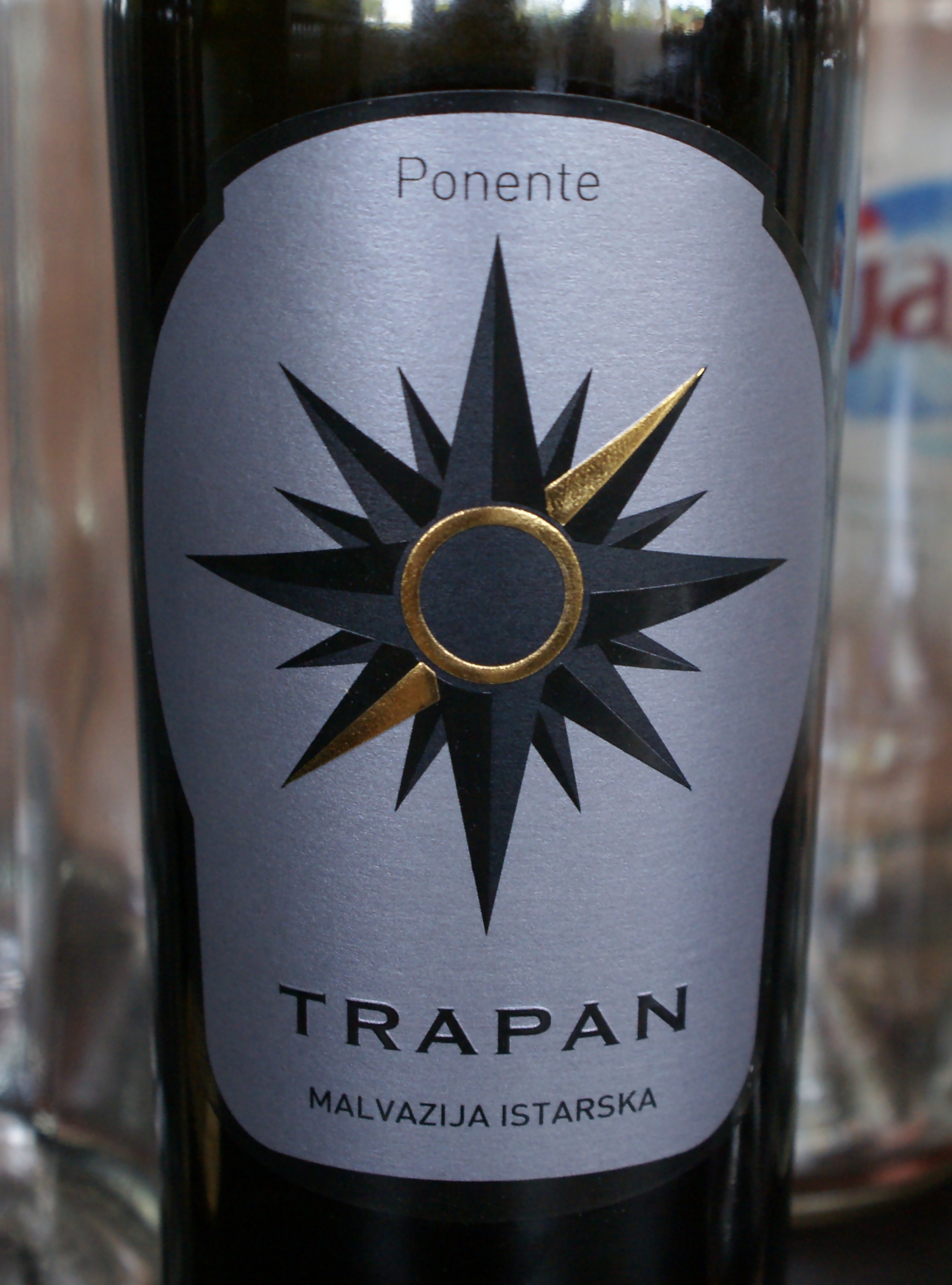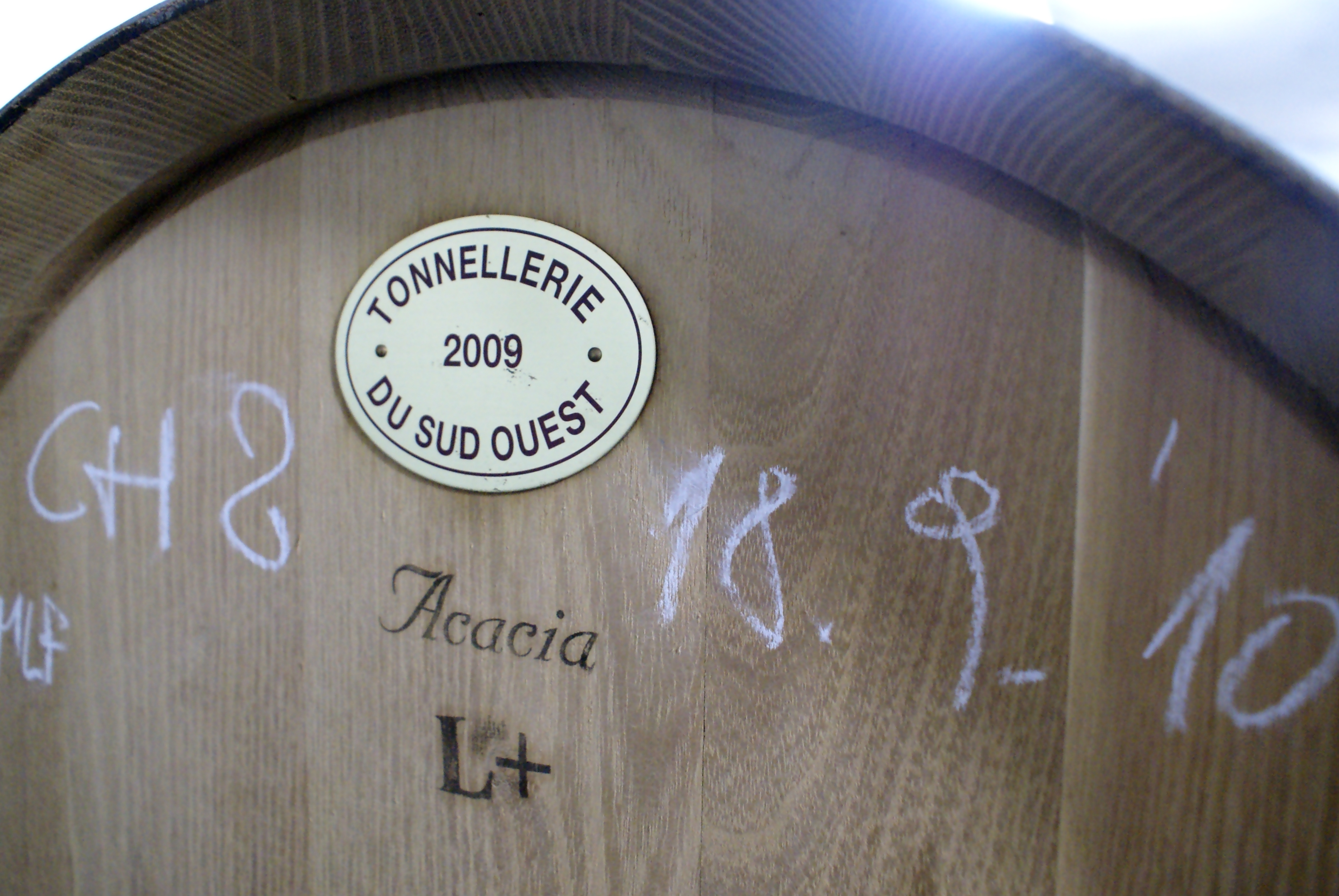Bruno Trapan: rising star
Posted on 7 May 2011
Following the exceedingly gratifying experience of my November trip to Croatia, I’ve jumped on the nearest occasion to return to this exciting Mediterranean country. The VinIstra competition organised in the seaside resort of Poreč has become a major reference for Adriatic wine in just three years.
I’ll share my thoughts about VinIstra and comment on my favourite wines (there were far more excellent bottles than you usually have at most competitions) when I receive the full results from the organisers. Meanwhile, during my free time from working in the VinIstra jury, I visited some of my long-time favourite producers, starting with Bruno Trapan.
Trapan is a new kid on the block. He has mavericked to fame in just five vintages: an exploit made all the more amazing by the fact he took up winemaking on a whim. Originally studying horticulture, he left school roughly at the time his grandfather passed away, leaving a parcel of 300 vines. Bruno had time to spare and he took care of the tiny plot. The experience of his intuitive amateur winemaking pushed him to pursue training at the viticultural school in Poreč. Two years later he was fermenting in a more organised fashion, and with the support of his family, assembled 6 hectares of vineyards in southern Istria, near the major tourist city of Pula.
Istria has long been renowned for its benign Mediterranean climate and exciting geology – an unusual mixture of shell limestone, iron-rich terra rossa silt, and bits of flysch – providing a very happy habitat for the vine. But it’s mostly north-western Istria that has caught the public’s attention. In the south, vineyards remain few and far between, and Trapan’s new plots, purchased in 2010 and planted just a few days before I visited, are in fact islands of viticulture amidst a sea of greenery. Lying on flat land 2 km from the Adriatic they might not be the most scenic vineyards out there, but the interest is under your feet. Special machines were needed to crush the rocky limestone outcrops, and the mixture of red and white in the soil is both visually striking and qualitatively promising.
Very generally speaking, terra rossa suits red wines in Istria while terre bianche limestone is preferred for the whites. The former have a distinctive style. Cabernet Sauvignon and Merlot might be grown almost everywhere in the world but rarely do they achieve the unusual balance of ripeness and freshness as here. They can be allusively herbaceous but supple and ungreen, yet even the ripest of them avoid New World overripeness and flabbiness. They do, however, need time in bottle to settle a bit and gain complexity and drinkability. Trapan’s 2009 Cabernet Nigra Virgo is an example of that. There is also the 2008 Syrah Shulùg which roughly shares the characteristics of the Cab: it shows broad ample fruitiness of an overseas Shiraz but has the meaty sap of a northern Rhône.
In the new vineyards, Trapan has planted plenty of Teran, Istria’s native red warhorse (related to Refošk with which it is often confused). Teran is trickier than Merlot: it boasts both high acids and tannins, resulting in a wine of abrasive power in youth that needs considerable skill and time to mellow. There are as many brilliants Terans in Istria as there are unbalanced ones, but judging by the 2010s I’ve tasted from barrel, Trapan’s will belong to the former category. There’s also the superdrinkable 2010 Rubi Rosé: pink is not big in Croatia and so Trapan’s qualitative effort immediately made the headlines. It allies Provençal elegance with southern structure and vinosity.
All that being said, I won’t be hiding my preference for Istrian white wines. And especially the peninsula’s speciality, Istarska Malvazija. This grape of disputed origins has a long track record here, and its flavour profile is so distinctive as to be, in my mind, one of the great wines of the modern Mediterranean. Why? It’s all about salinity. Salty notes are a fashionable topic in white wines as the wine-drinking world seeks more drinkability and mineral expression, but it’s a term that’s often exaggerated. Yet in Istria, salty notes are very obvious: it’s almost as if the Adriatic sea breeze made its way into your glass. But Malvazija has enticing fruit too: a combination of floral, citrusy and exotic. It’s an electrifying mixture. Trapans 2010 Malvazija Ponente I tasted right on getting off my car after a 7-hour combined journey from Warsaw had incredible electricity about it: a positive flavour shock.
The quality of Istrian Malvazija has been consistently improving over the last decade, and it’s now become a recognisable Central European brand, a status only achieved by Austrian Veltliner perhaps (dry Tokaji Furmint is getting there, too). There is stylistic diversity, too: Malvazijas range from the light, crisp, saline and mildly reductive (and however uncomplex these are good choices at the table to match with Istria’s excellent seafood) to the rich, oaky, exotic, overripe, macerated and possibly oxidative. Trapan’s Ponente takes a happy middle course while his 2009 Uroboros, a blend of Malvazija with around 30% Chardonnay, explores the latter direction. A broad, complex, voluminous wine, it needs three or four years in bottle to reveal its full potential. It’s interesting how unoaky it tastes: Malvazija’s mineral power eats up the oak easier than most grapes, and 75% of the blend is aged in acacia barrels which have the miraculous property (if you compare with new oak) of emphasising freshness and minerality. Uroboros is a wine I’d choose to a person who has no idea about Croatia: it’s an eye-opener.
Disclosure
My trip to Croatia including flights and accommodation was sponsored by the VinIstra competition where I served as a jury member. Wines and lunch kindly offered by Bruno Trapan.






